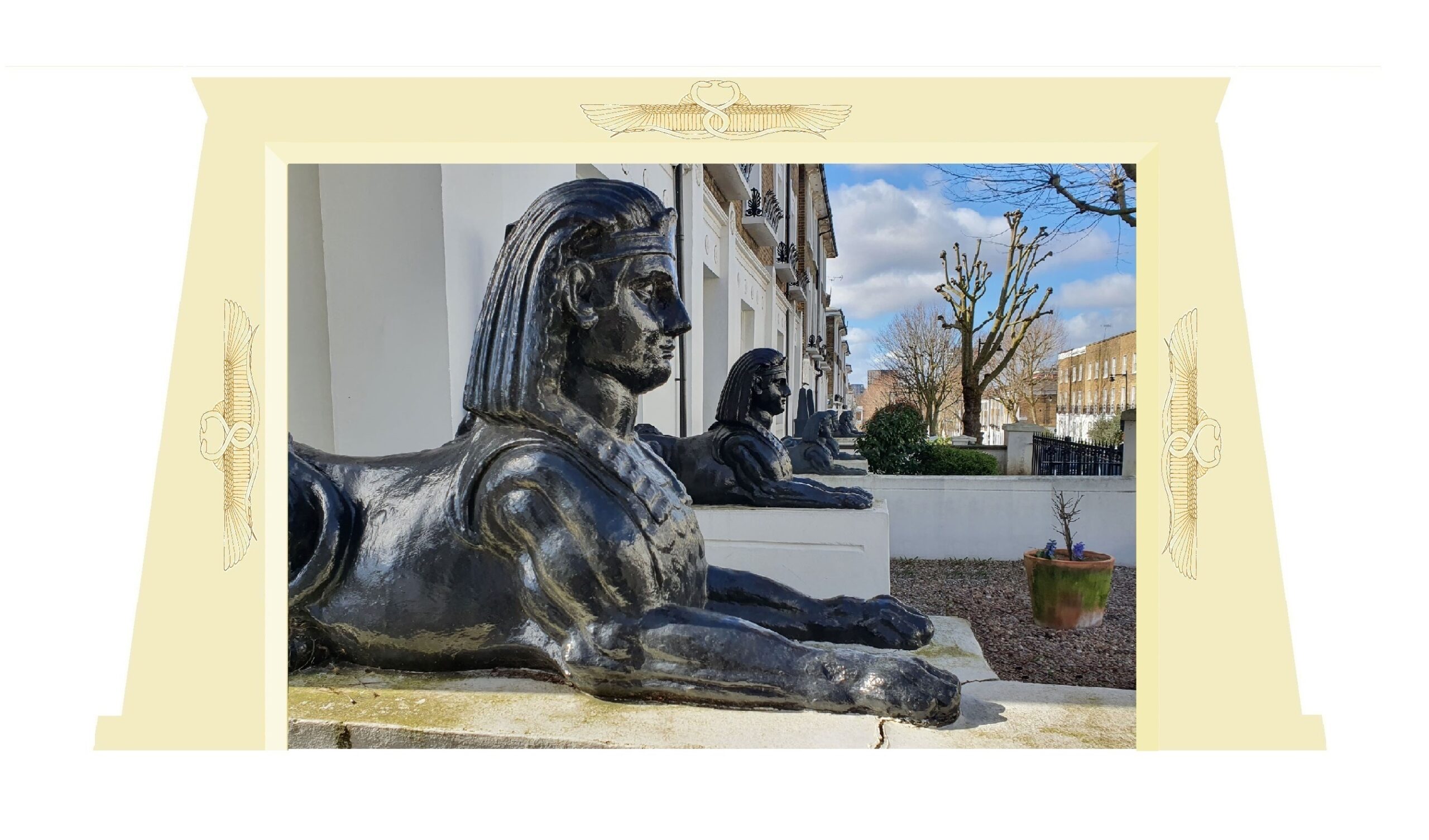
Archaeological excavations in Egypt in the early 19th century, and the discovery of Tutankhamen’s tomb in 1922, meant ‘Egyptianate’ styling was in vogue in two distinct periods. What can London offer us of these phases? Not much, it turns out. However, the few buildings we do have suggest architects in London found great, or just downright weird, inspiration in the land of the pharaohs.
Egyptian Avenue & Lebanon Circle, Highgate West Cemetery, Camden (1838)
Most surviving examples from the earlier period are in cemeteries – the association of Egyptian architecture with the memorialization of the dead was to be expected. There are several Egyptian-styled mausolea in the larger London cemeteries, along with entrance lodges at Abney Park in Stoke Newington. However, I want to focus on two structures in Highgate West. These were designed by J.B. Bunning, later Architect to the City of London and more famous for his magnificent – but not in the least bit Egyptian – London Coal Exchange, now lost.
The Egyptian Avenue is a covered passage of catacombs cut into a hillside, leading to the Lebanon Circle, two open concentric rings of catacombs below ground level. The avenue entrance is decorated with pairs of half columns with lotus bud capitals, supporting a heavy coved cornice.
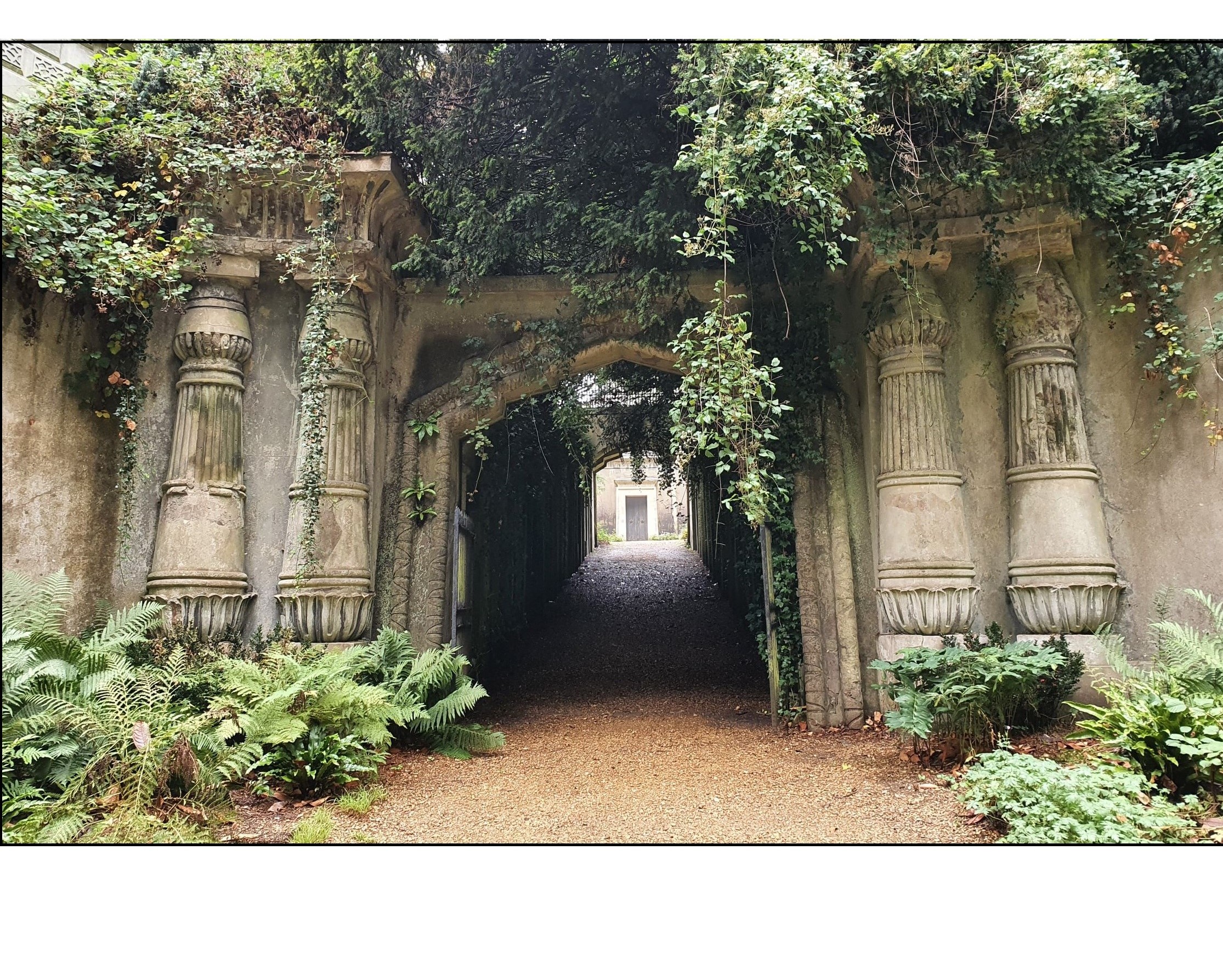
→ The entrance to the Egyptian Avenue, looking like a Hollywood set for a Gothic horror film. It was designed with a false perspective so that it looks longer than it actually is. The Lebanon Circle is visible in the distance.
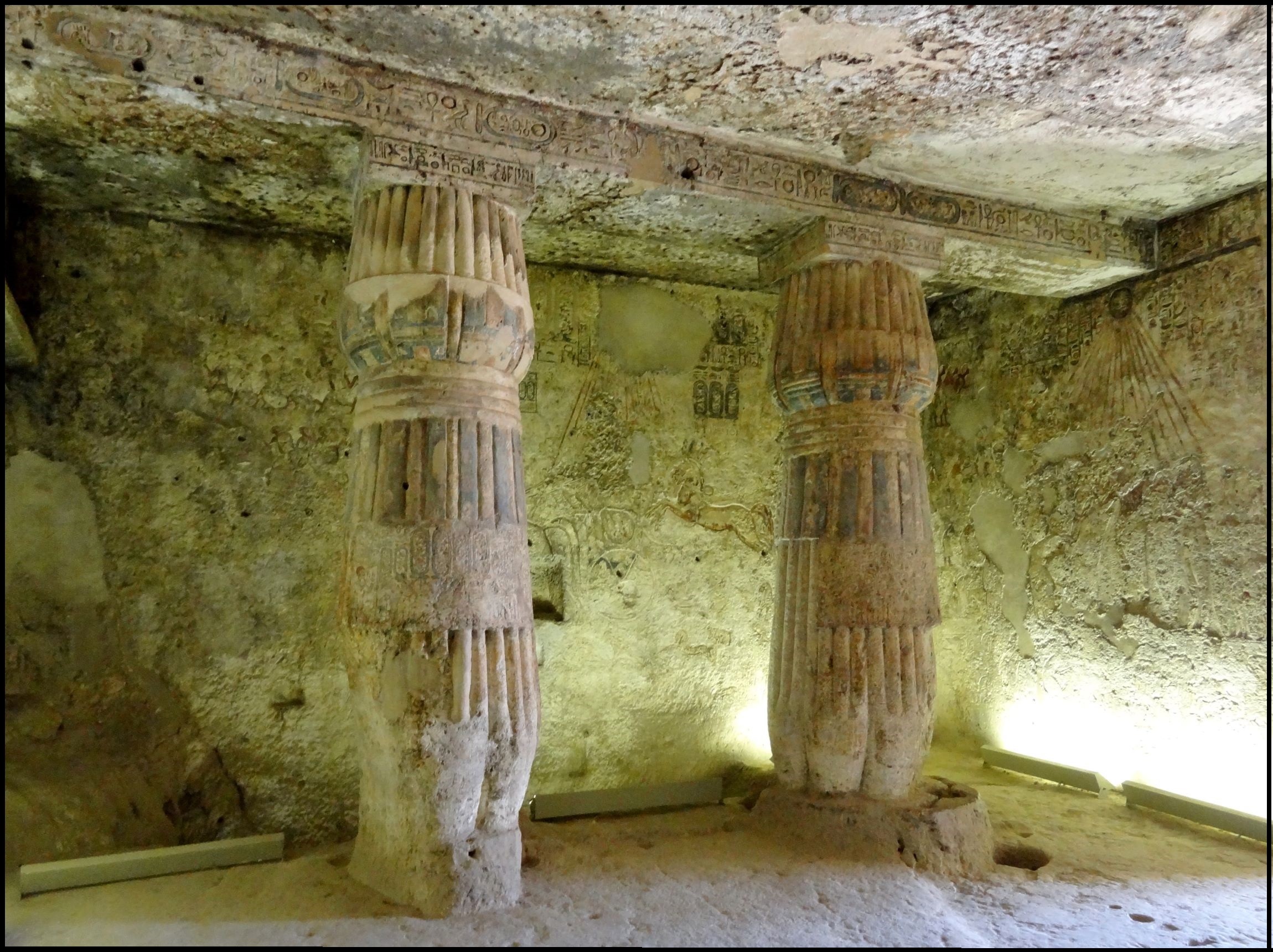
← Columns in the 3,300 year-old tomb of Panehsy in upper Egypt reveal the greater degree of historical accuracy Bunning aimed for – or was allowed – compared to those who followed in his footsteps.
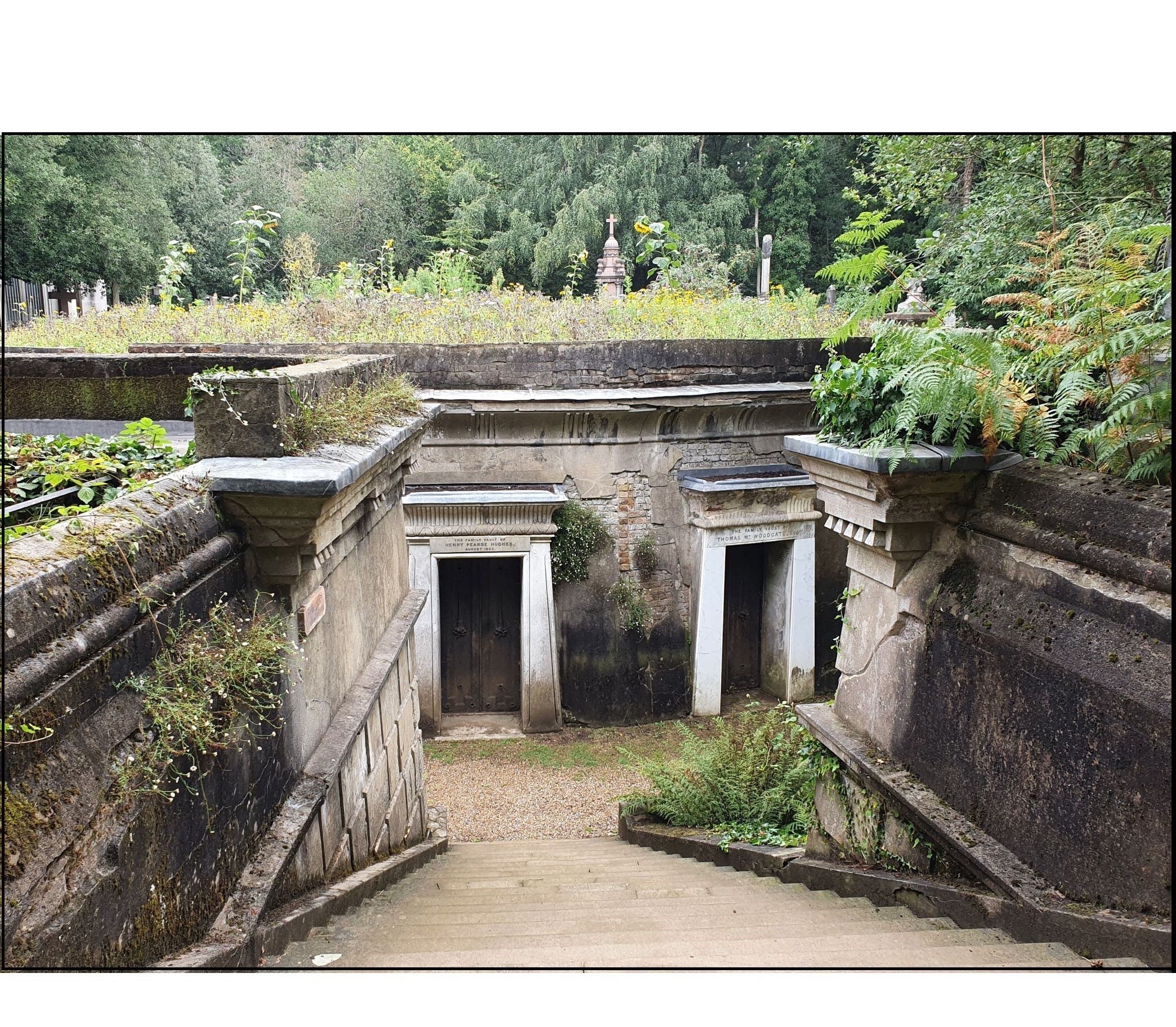
→ The Lebanon Circle, named after a cedar tree that stood here until 2019. It’s just as creepy as the Egyptian Avenue and even more ruinous, although it is a managed decay as the area was restored in 1997.
Poet and Novelist Radclyffe Hall (1880-1943) and opera impresario Carl Rosa (1842-89) are two notable ‘residents’, appropriate given the theatrical feel of the place. Most visitors to Highgate aim for the grave of Karl Marx, which lies in the East Cemetery, and so miss its wonderfully evocative – and rather less crowded – western twin.
Miscellaneous Sphinxes, Bromley & Islington (mid-19th century)
Away from cemeteries there are several noteworthy 19th century Egyptian flourishes, mainly involving the mythical half man, half lion. For example, there are the four on the terrace steps of Sydenham Hill. Dating from 1854 and based on a genuine Egyptian sphinx in the Louvre, these guarded the Crystal Palace before it burned to the ground in 1936. As sternly protective as ever, they have been left for 85 years to guard the abandoned patch of ground on which it once stood.
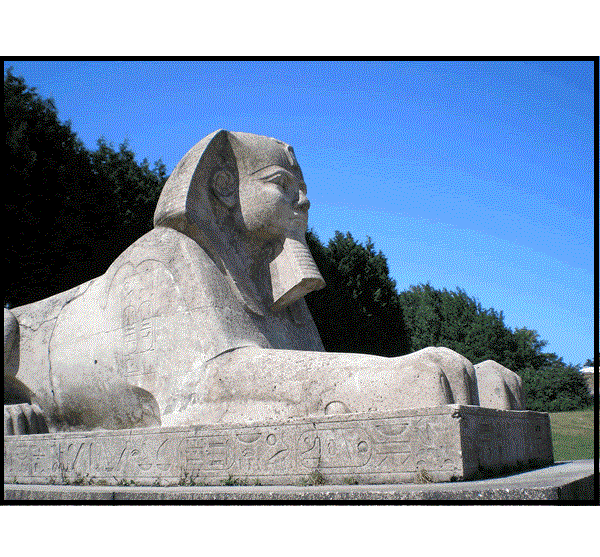
← The Sydenham sphinxes looked magnificent, but had deteriorated badly over the years. Efforts at conservation after this photograph was taken have given them back their pristine rendered concrete and terracotta-red paint finish, as well as the odd missing paw.
Before moving into the 20th century, we need to talk about Richmond Avenue, Islington. For some inexplicable reason, each home in a series of 1841 terraces was built with miniature sphinxes and obelisks guarding its front door. The normally academic Historic England enters into the absurdist spirit of the thing. It gleefully quotes novelist Arnold Bennett, who in 1925 described them as ‘too marvellous.’ Personally, I’d opt for ‘unhinged.’ The obelisks are helpfully labelled ‘Nile’ and, as the title image shows, the sphinxes are seriously muscular.
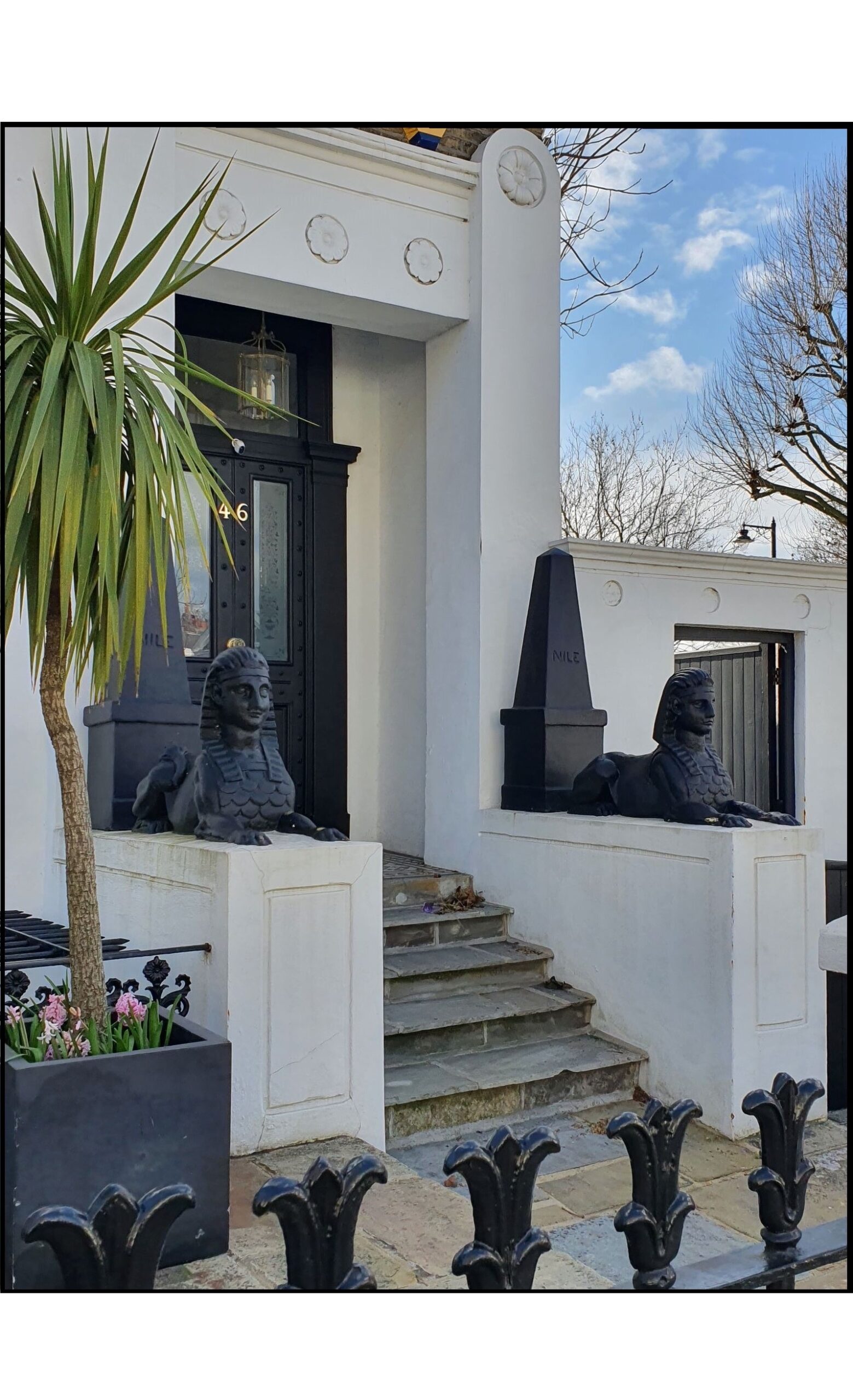
← A bizarre sight for any residential street. We have Joseph Kay, surveyor for the development of Lord Thornhill’s Islington Estate, and builder William Dennis to thank for this example of kitsch, dating from 80 years before that term even entered the English language.
At least the resident of this house has entered into the spirit of the thing, with a suitably exotic plant to complete the scene.
On to the 20th Century, and things we can blame on Howard Carter.
Adelaide House, King William Street, City of London (1925)
A small neo-classical former hotel, on the north east corner of London Bridge, was demolished in 1920. What replaced it on this prestigious site was neither small nor neo-classical.
Adelaide House was designed by Sir John Burnet and Thomas Tait and constructed in Portland stone and granite. It was the tallest office block in the City. Tait had been sent to Egypt to look at Egyptian structures, as Sir John sensed they were influencing western architecture again. As a result, Adelaide House has the heavy cornice and inward sloping corner walls that evoke an Egyptian feel. However, architectural historian and all-round building guru Nikolaus Pevsner suggests there are also elements of both Frank Lloyd Wright and the Chicago School; Historic England cites archaic Greek influence. So, not a structure for the purist, and the result is dour and bunker-like.
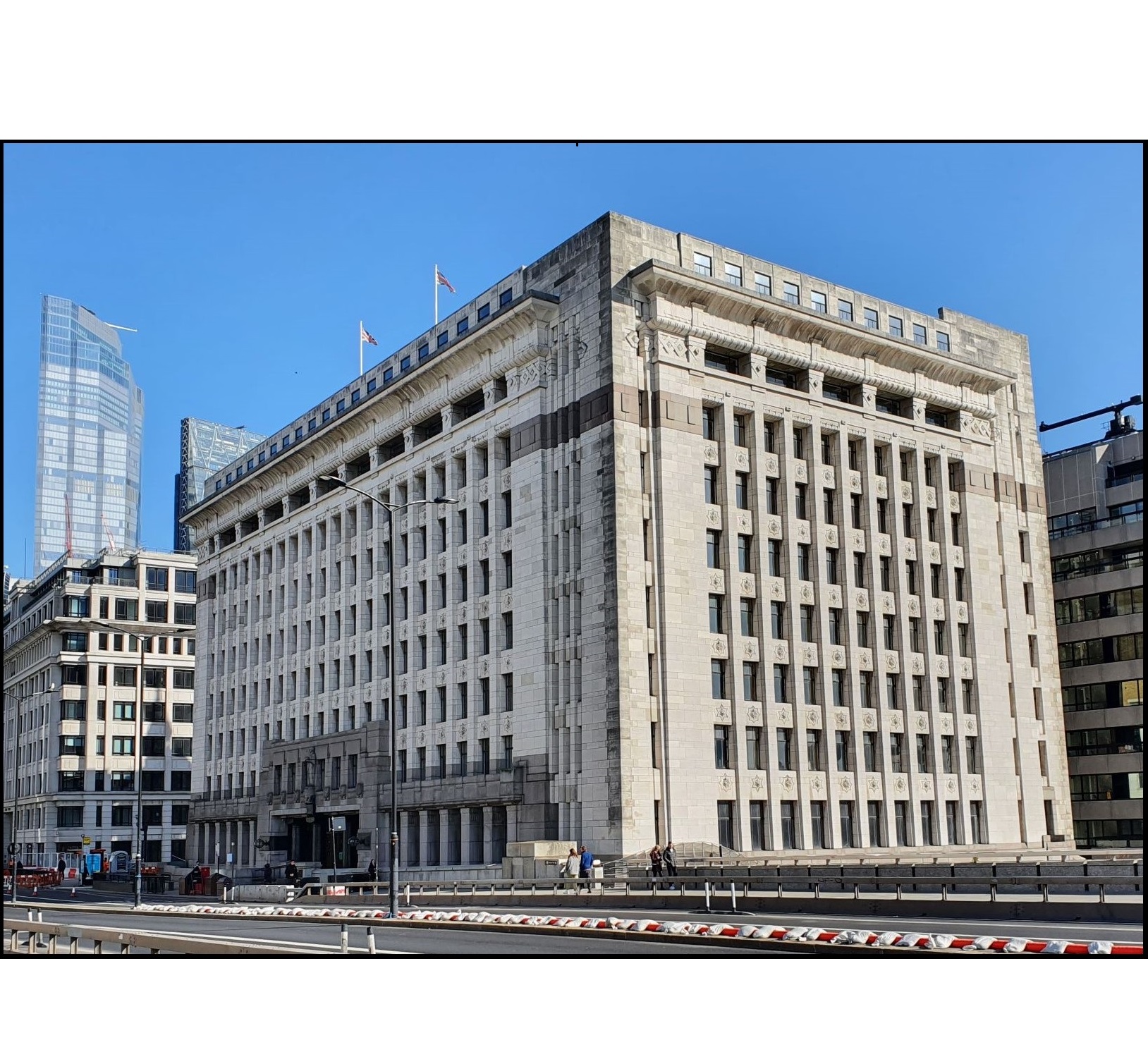
← The architectural pick ‘n’ mix seen from London Bridge – its best angle.
Adelaide House is listed Grade II. Bunkers are valued by the architectural cognoscenti, it seems.
Peterborough House, Fleet Street, City of London (1928)
Peterborough House has the feel of a bombastic, imperialist structure with minor Egyptian detailing tacked on to appear fashionable. It is therefore fitting that it was constructed as the offices of the Daily Telegraph, which sometimes has the feel of a bombastic, imperialist newspaper. It was designed by Elcock Sutcliffe and Thomas Tait and, as with Adelaide House, constructed using Portland stone and granite. The lotus bud capitals are there, just, stylised to within an inch of their art-deco life, but there are no inward sloping walls or heavy top cornices.
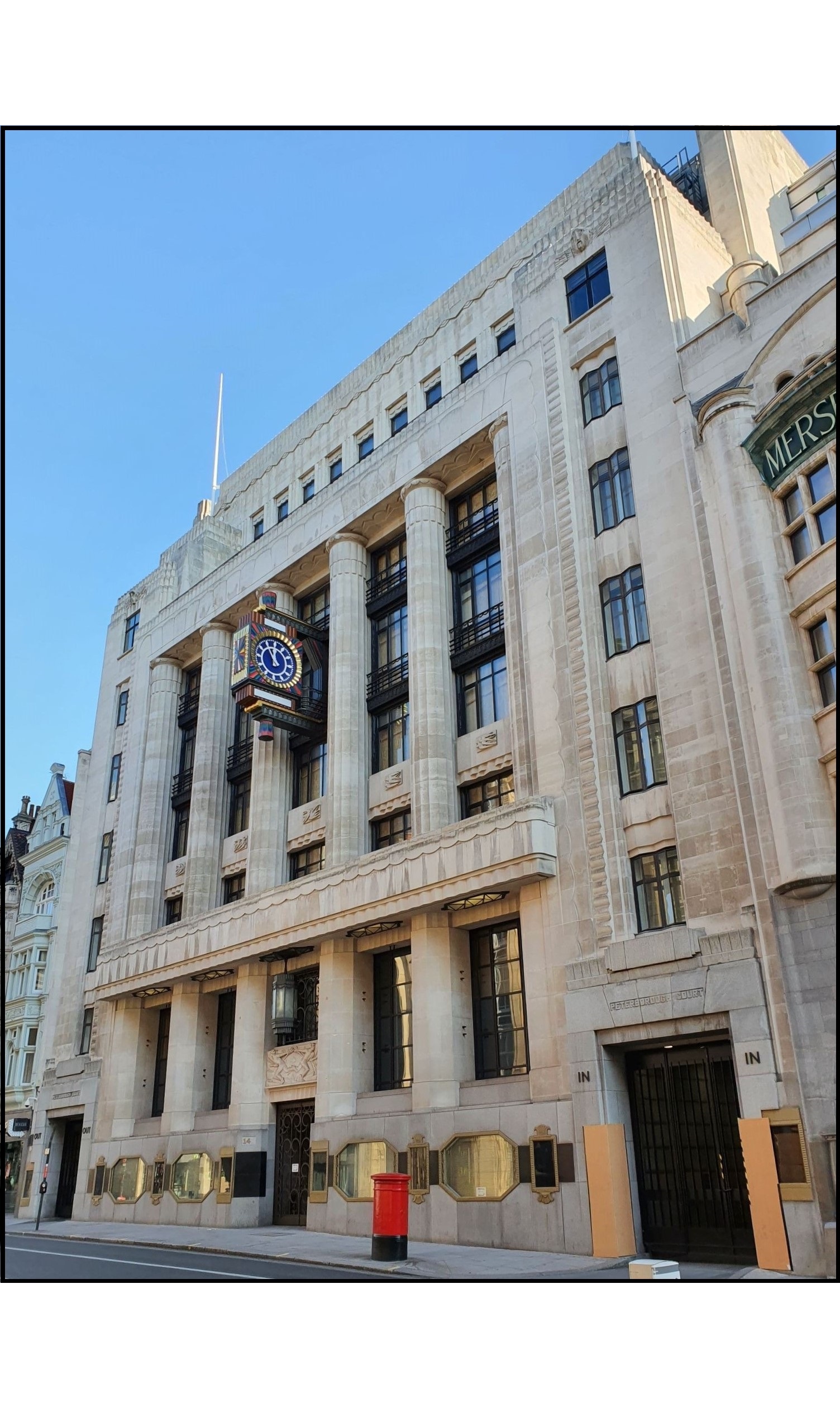
→ The most attractive Egyptian feature is the colourful clock.
Peterborough House was hardly cutting edge design, and within four years an act of ruthless architectural oneupmanship made it totally passé, when the Daily Express decided it needed a new headquarters too.
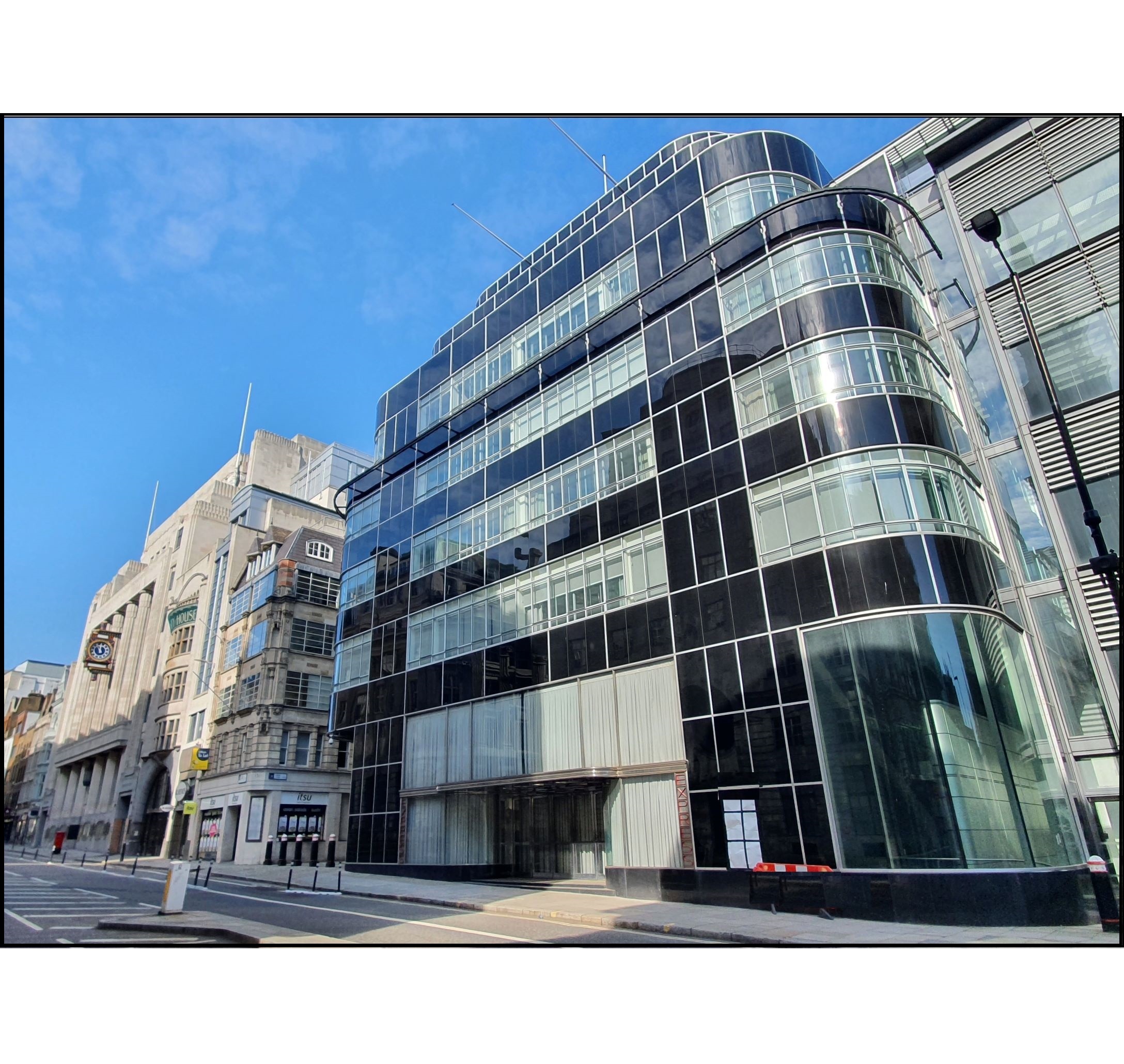
→ The streamline-moderne Daily Express building (1932), seen with its staid older neighbour in the background. It’s hard to believe only four years separate the two.
The Telegraph and Express have long since left Fleet Street – along with every other newspaper and news organisation. Both buildings were occupied by Goldman Sachs until recently.
Carreras Cigarette Factory, Mornington Crescent, Camden (1928)
In the late 18th century a Spanish political exile set up a tobacconist shop in Soho. His name was Don José Carreras Ferrer, and he had a black cat that would sleep in the shop window. The cat became a local landmark and his trademark. By the mid-1920s Carreras needed a new factory. With its ‘Black Cat’ cigarettes, and the popularity of all things Egyptian, the style was a foregone conclusion.
The factory was revolutionary: Pre-stressed concrete, air-conditioning and dust extraction all featured, and it inherited the optimistic name ‘Arcadia Works’ from its predecessor. The façade features columns with red, green and blue details and our old friends, the lotus bud capitals and heavy cornice. Carreras described it as a ‘copy of the Temple of Bubastis, the cat-headed goddess’, a laughable claim designed to emphasise a link with the cigarette brand.
The structure replaced open land in front of Mornington Crescent homes, and had been opposed by residents. Their defeat, which must have come as no surprise given the mighty Carreras black cat had metaphorically crossed their path, did at least lead to the London Squares Preservation Act of 1931.
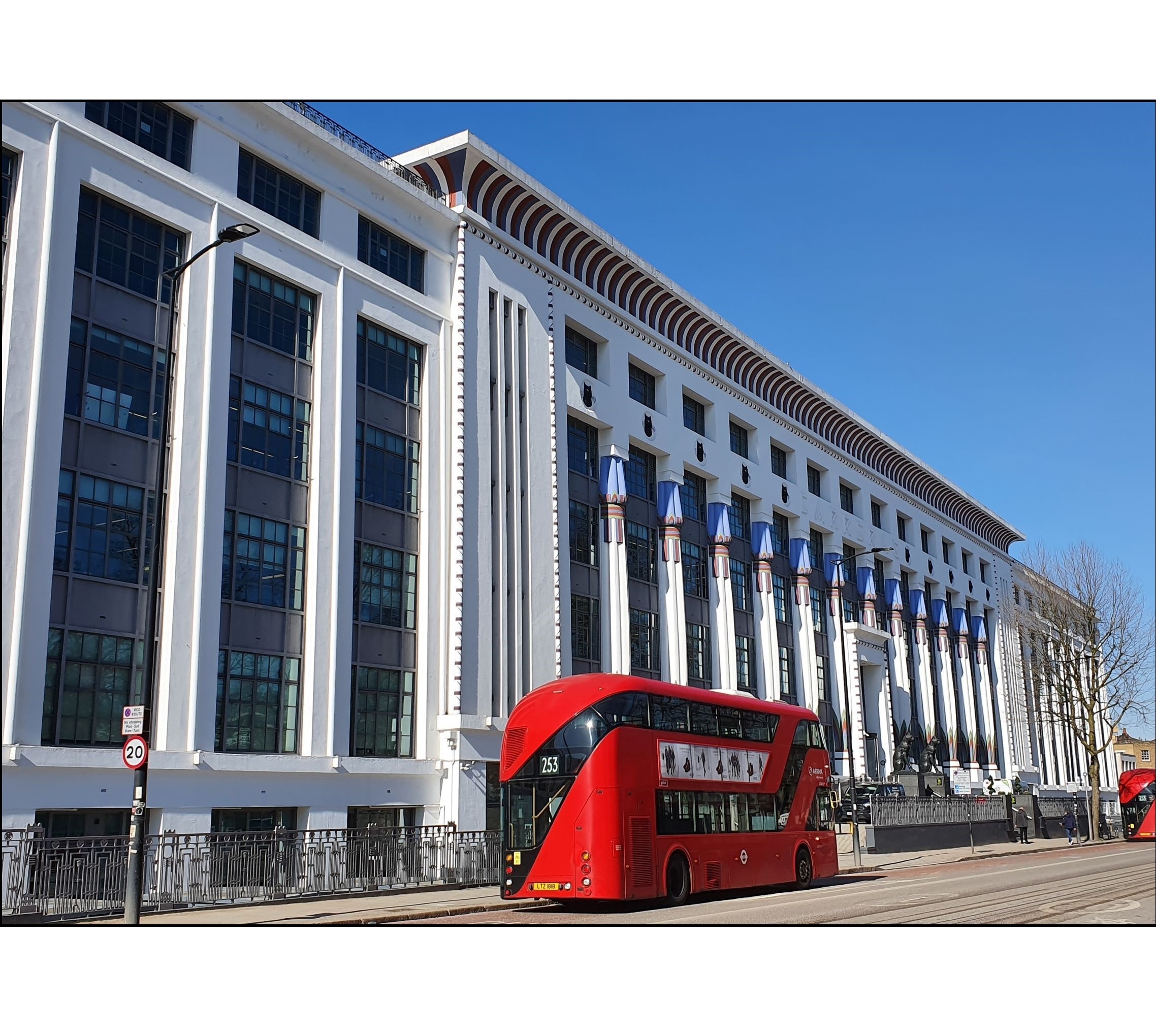
← Egypt meets a London bus. A magnificent restored facade that is also illuminated at night.
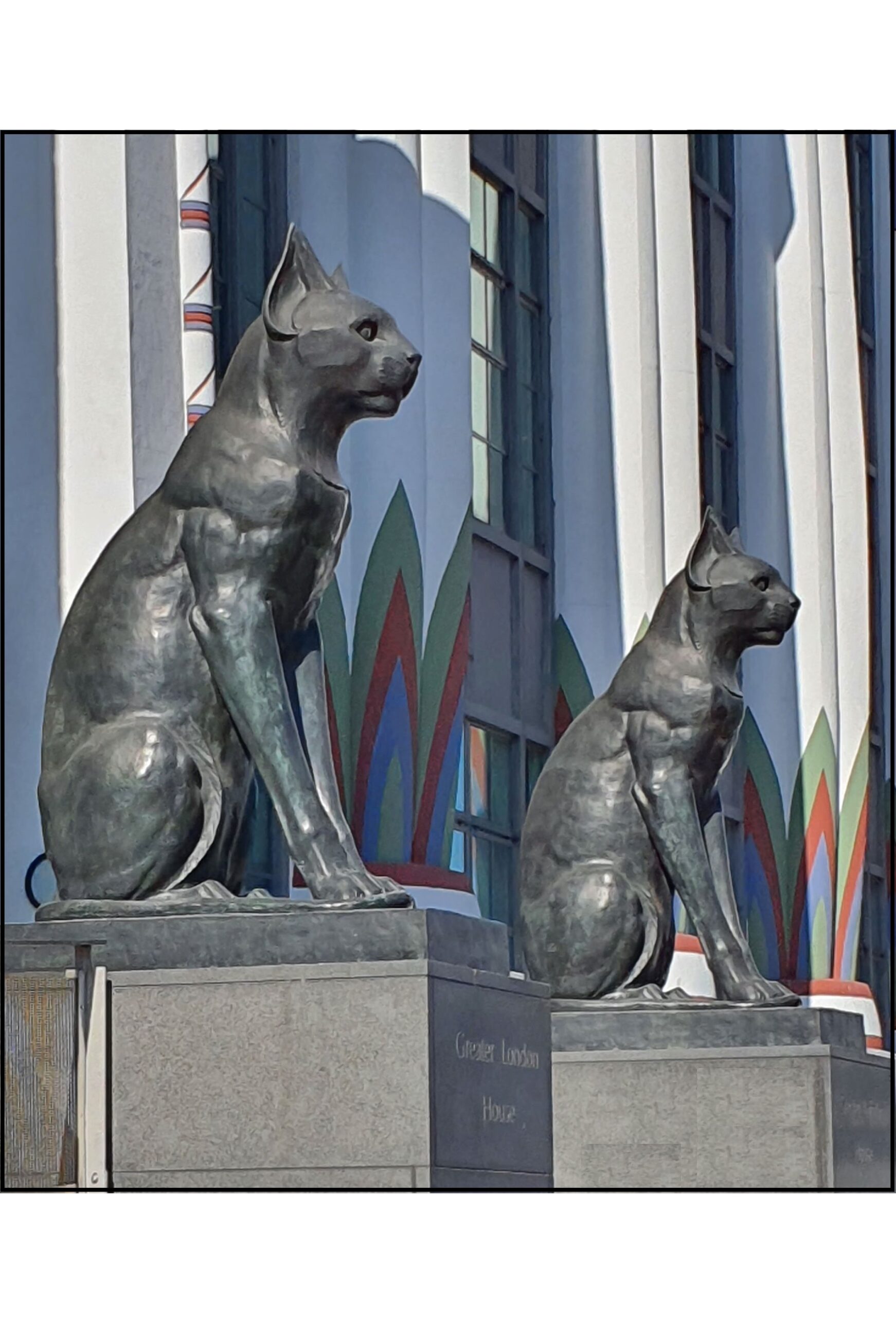
← The cats guarding the main entrance are 12ft high replicas of the originals. One of those went to the replacement factory in Basildon, Essex, the other to a Carreras facility in Jamaica. I know which cat I’d rather be.
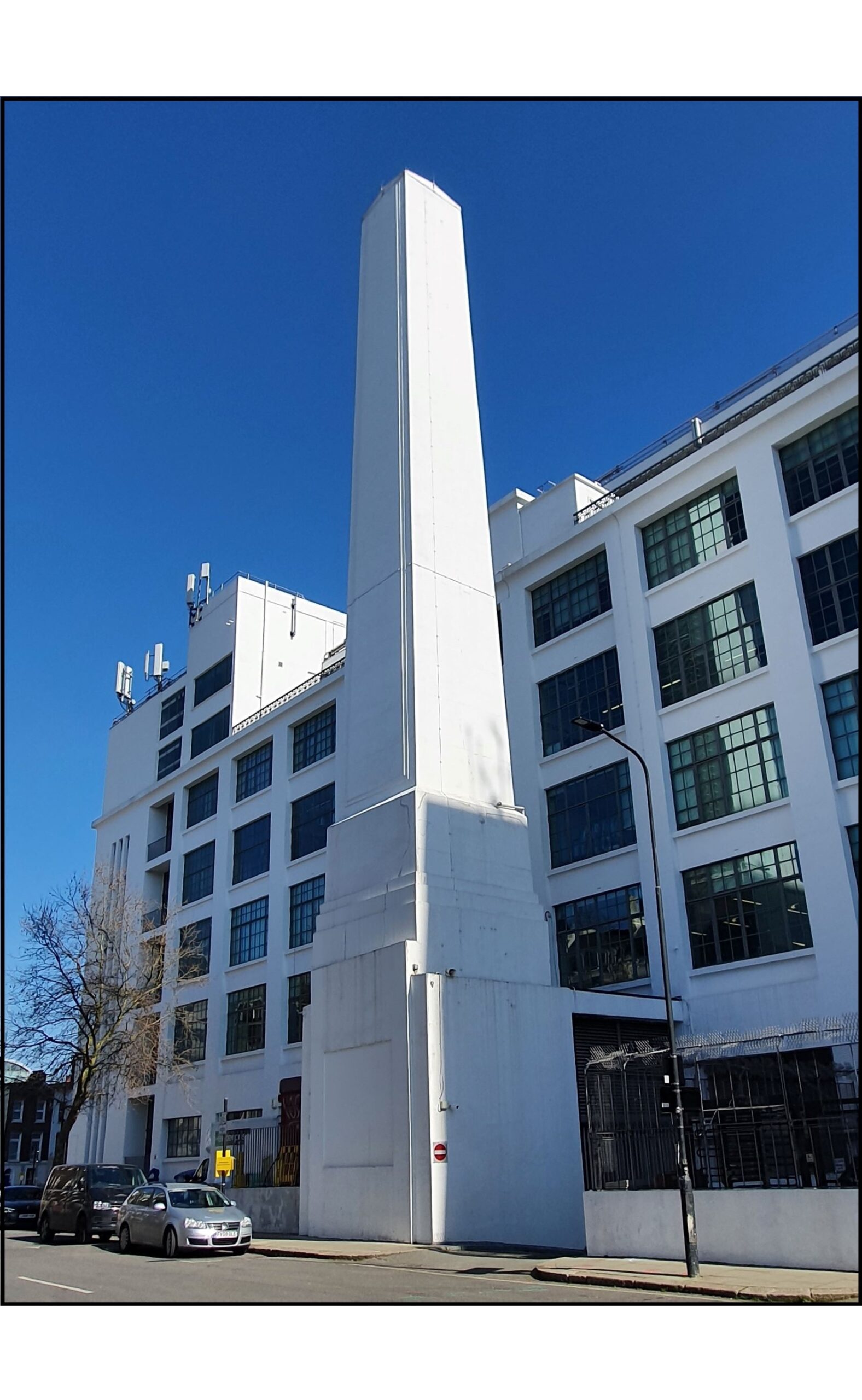
→ I doubt it was much consolation for the residents, but the rear of the factory is enlivened by a chimney shaped to mimic an Egyptian obelisk.
The factory was converted into offices in 1961, at which point much of the detailing was removed, and refurbished in the 1990s, at which point most of it was put back again.
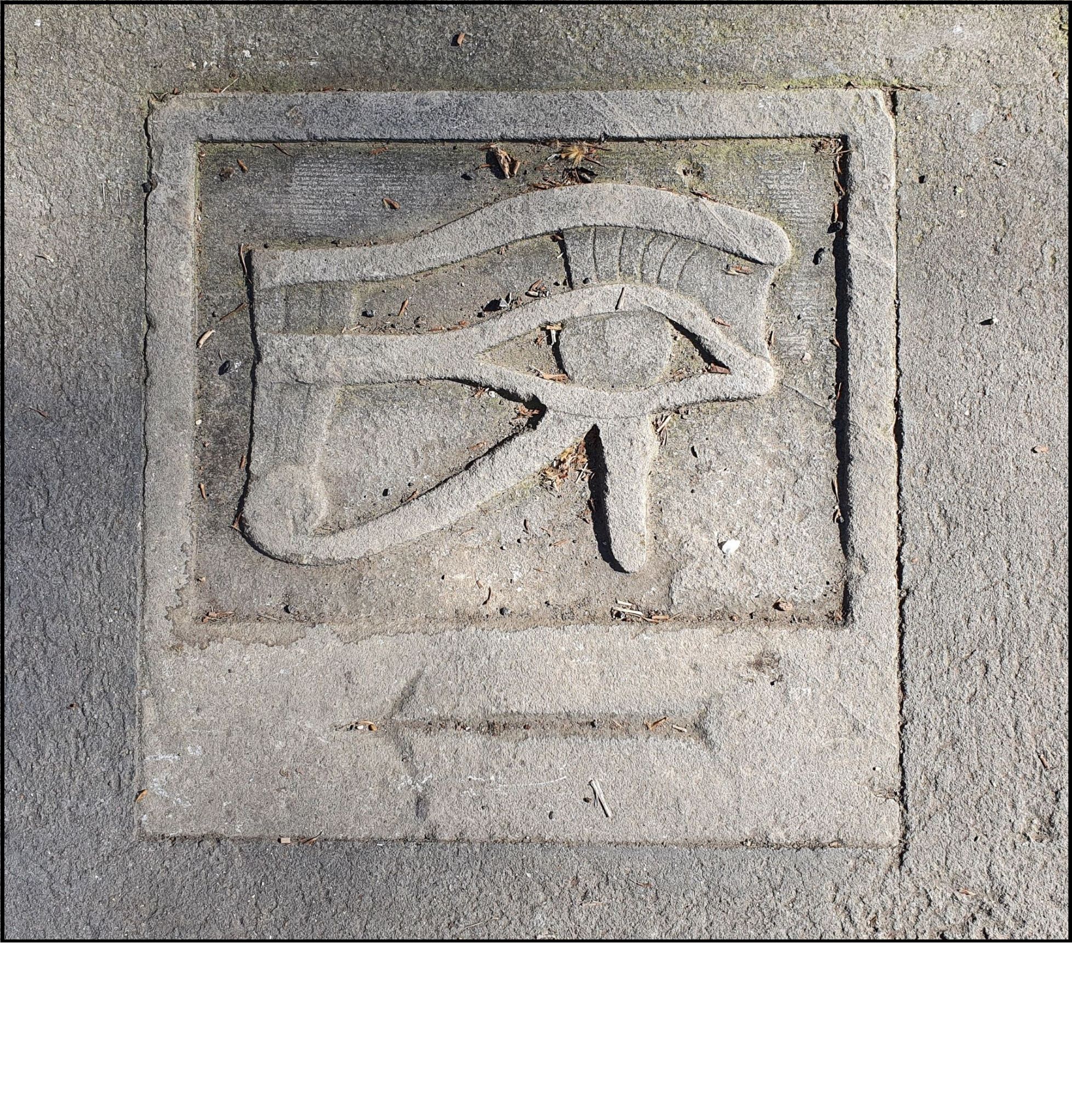
→ There is an ‘Eye of Horus’ set into the pavement opposite the factory’s entrance. No one seems to know why it’s there.
Ah well, another London mystery.
Carlton Cinema, Essex Road, Islington (1930)
This is another full-on, colourful interpretation of the Egyptian style. It was designed as a cine-variety theatre, allowing for live stage acts as well as movies. George Coles, an experienced cinema architect, was the man responsible and he gives us the complete package, producing a temple-like appearance: Plain stone-like faience, with lotus flower and pyramid patterns, a heavy cornice, lotus bud column capitals, and a few slanting wall facings and window surrounds.
Historic England suggests that the columns are characteristic of architecture from Amarna, the capital city created from scratch by pharaoh Akhenaten, who worshipped the sun god Aten and was a bit weird even by ancient Egyptian standards. Amarna was excavated in the 1920s and inspired many architects of the time.

← One of the most remarkable cinema frontages in London, and the only one surviving with Egyptian styling. The vivid colours are ceramic, not a cheap paint job.
Sadly, Coles didn’t carry this style through the entire building. The auditorium is in a disappointing French Renaissance style and the foyer and other front of house areas have only minor Egyptian detailing.
The live stage acts were a failure and had gone within a decade; the Carlton was sold to the large ABC chain. Following an unusually long period as a Mecca bingo hall that helped ensure its survival, and a short period of closure, it is now a community centre called Gracepoint run by a religious group with ambitious plans for further restoration.
And finally, the Hoover Building, Perivale, Ealing (1933)
The former Hoover factory is an attractive building, but its claim to Egyptian influence is, I must admit, tenuous. It has some colour, and inward-sloping corners with some recognisably Egyptian detailing, but by 1933 the pharaohic look was being swamped in the art deco movement by other influences. Its time in the sun had been brief and our journey must, perforce, end in Perivale.
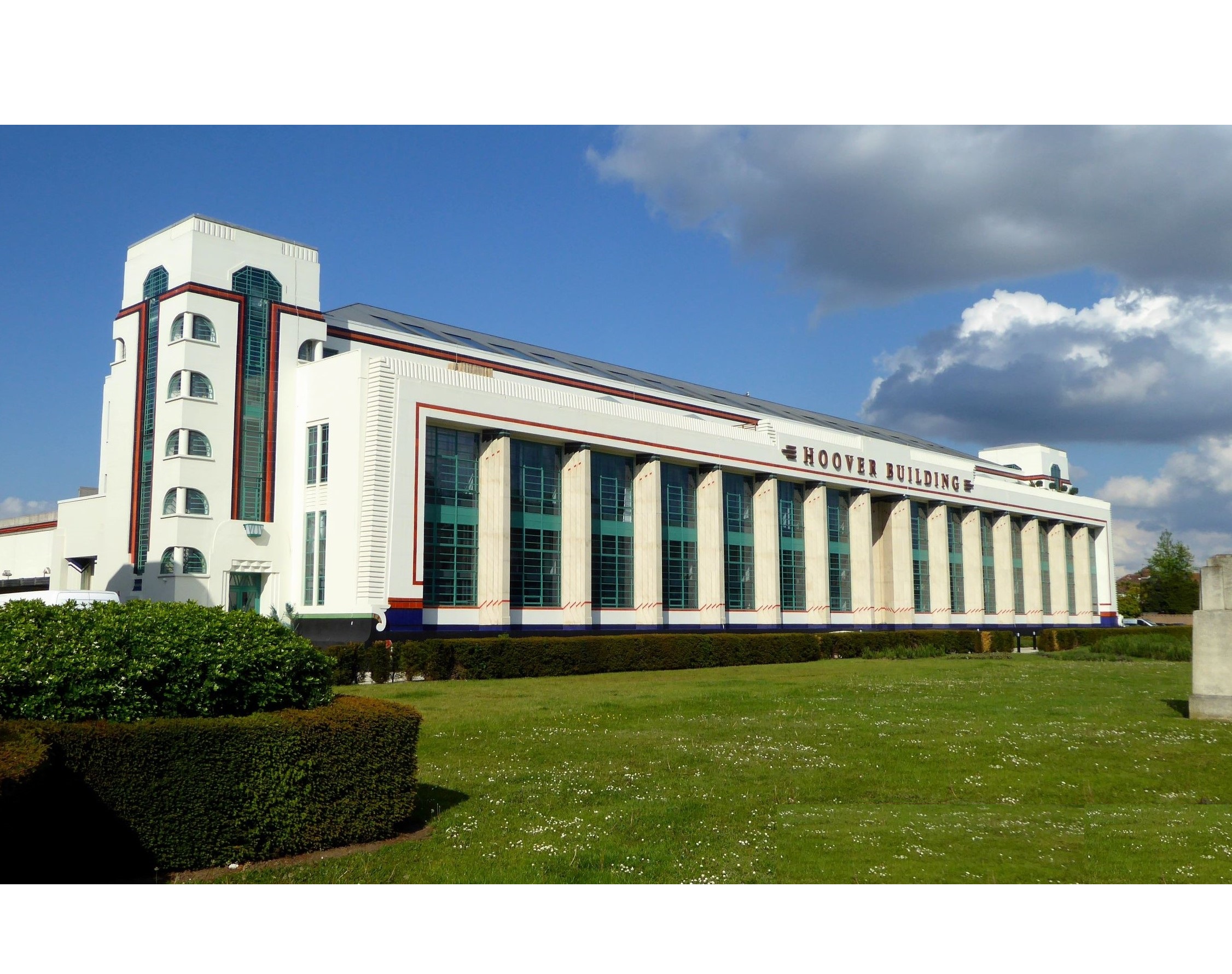
← A masterpiece in its own right, but students of Egyptian styling shouldn’t rush to West London.
Nearest Stations:
Credits:
Selected Bibliography: